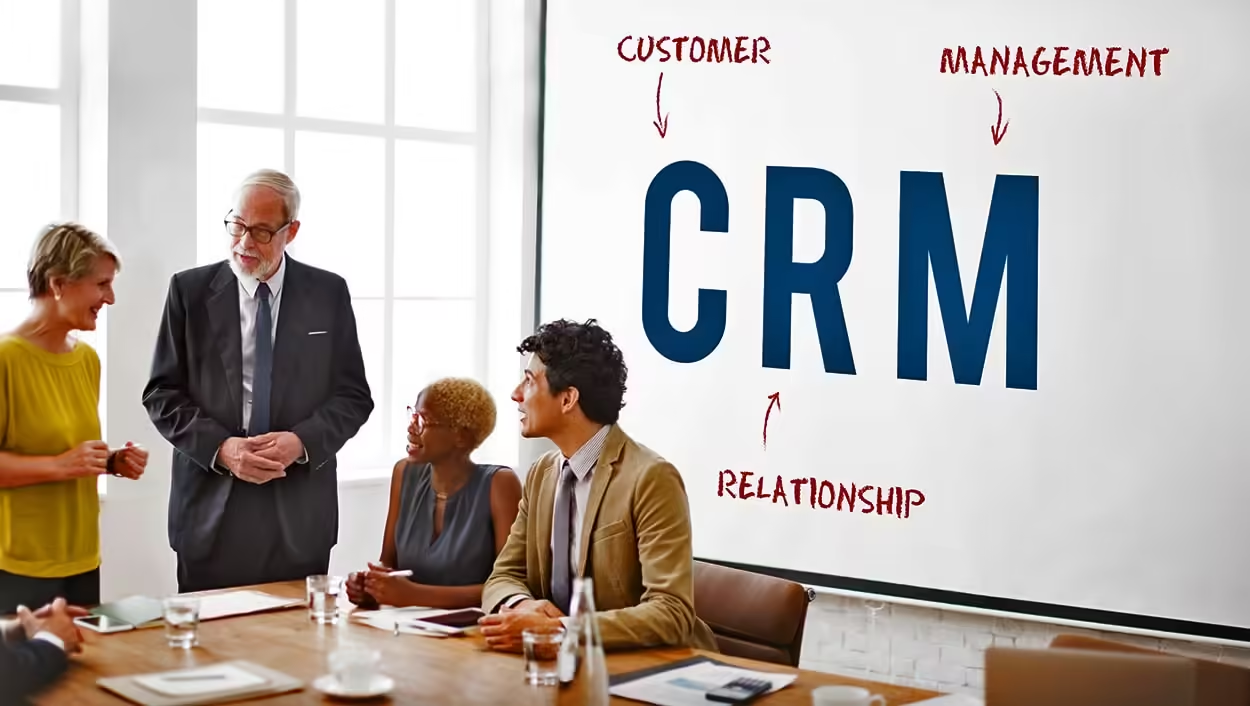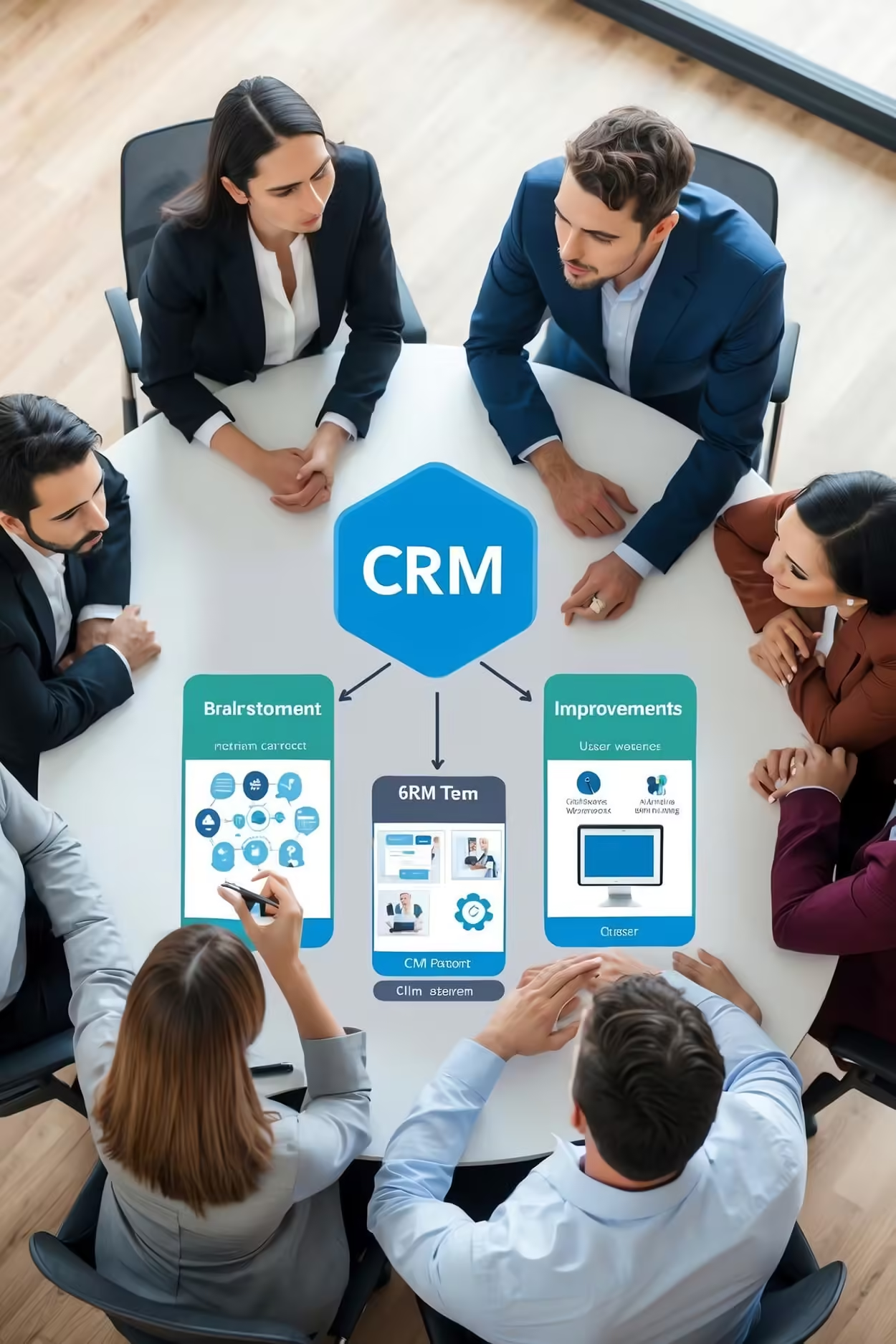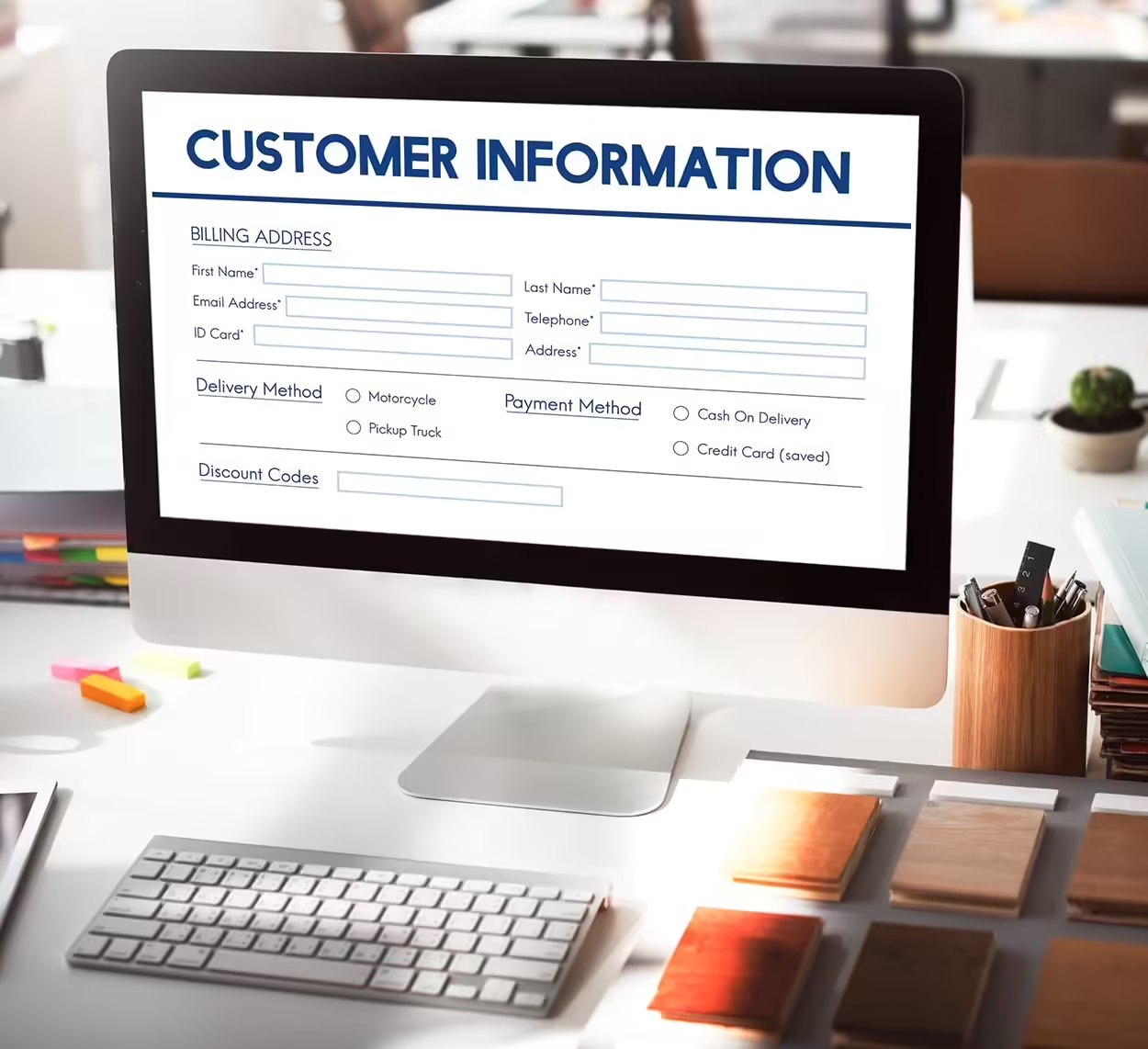Introduction
Customer Relationship Management (CRM) strategy: CRM, is the process by which a company or other entity manages its relationships with consumers, usually using data analysis to examine vast volumes of data.
In today’s fast-paced business environment, a robust CRM Strategy is important for maintaining a competitive edge.
We will explore the main elements of a good CRM strategy in this all-encompassing guide, providing useful advice and active insights to enable your business to flourish.

Why I Decided to Implement CRM
Let me tell you about a conversation that changed the course of our coffee business. My partner and I have always been passionate about brewing the best coffee and creating a cozy atmosphere for our customers.
But as we expanded our coffee shop chain across the USA, we started noticing a gap—a disconnect between us and our customers. We knew their favorite drinks, but we didn’t truly understand them.
One day, I sat down with my partner to discuss something I had been researching: Customer Relationship Management (CRM). I could tell my partner was skeptical at first, not convinced that a software system could make much difference in a business that thrived on personal connections.
But as I laid out the benefits, explained how CRM could enhance our customer experience, streamline operations, and increase profits, I saw that initial skepticism fade into intrigue.

The turning point came when I showed how CRM could help us know our customers better than ever before—not just what they ordered, but why they chose us over the competition, and how we could keep them coming back. It wasn’t just about sales; it was about building deeper, more meaningful relationships. And as my partner started asking questions, I knew we were on the verge of something big.
Please allow me to summarize my CRM explanation, which covers not only how and why we and you should implement it, but also addresses potential challenges and explains how it can revolutionize any business.
Famous Quotes on CRM
In the world of Internet Customer Service, it’s important to remember your competitor is only one mouse click away.” – Doug Warner
“The goal as a company is to have customer service that is not just the best but legendary.” – Sam Walton
“Customer relationships are about feeling good, not just transactions.” – Mikkel Svane
“Your most unhappy customers are your greatest source of learning.” – Bill Gates
“Customer experience better be at the top of your list when it comes to priorities in your organization.” – Steve Cannon
Understanding Customer Relationship Management
Customer Relationship Management (CRM) is a strategic approach to managing a company’s interactions with current and potential customers. It involves the use of technology to organize, automate, and synchronize sales, marketing, customer service, and technical support. The ultimate goal of CRM is to improve customer relationships, streamline processes, and increase profitability.
The Importance of CRM Strategy | Key Benefits for Coffee Shop Chain
A well-crafted CRM strategy is crucial for several reasons:
- Enhanced Customer Insights: By centralizing customer data, businesses can gain deeper insights into customer behavior, preferences, and needs.
- Improved Customer Experience: CRM systems enable personalized interactions, leading to higher customer satisfaction and loyalty.
- Increased Efficiency: Automation of routine tasks allows employees to focus on more strategic activities, boosting overall productivity.
- Better Decision-Making: Access to real-time data and analytics supports informed decision-making and strategic planning.
Real-world example: Amazon
Amazon is one of the most customer-centric companies in the world, and its CRM strategy is key to its success. Through data-driven insights and highly personalized recommendations, Amazon can anticipate customer needs, suggest products, and create a seamless experience across its platform. Every time a customer browses, purchases, or interacts with Amazon, the company collects valuable data that enhances future interactions.
Learning: Personalization through CRM can transform customer experiences, making them feel valued and understood, which drives loyalty and repeat purchases.

How CRM Works for Our Coffee Shop Chain
For our business, CRM can be a game-changer in several key areas:
1. Customer Data Collection
The CRM system collects and stores customer data whenever they interact with our brand. Whether it’s through online orders, loyalty programs, or in-store visits, the CRM will track purchase history, preferences, and feedback.
For example, if a customer frequently orders a caramel macchiato, our CRM will log that data. Next time they visit, we could offer them a personalized discount on their favorite drink, making them feel recognized and appreciated.
2. Loyalty Programs
CRM allows us to easily manage and automate our loyalty programs. We can create a rewards system where customers earn points with every purchase. The CRM tracks those points and automatically notifies customers when they’re eligible for a free coffee or snack. This keeps them engaged and encourages repeat visits.

3. Targeted Marketing
With CRM, we can segment our customer base and send out tailored marketing campaigns. For example, we could send a special “free coffee” promotion to customers who haven’t visited in a while, or offer a discount to frequent customers who bring friends along. The CRM would handle this automatically, making it much easier for us to maintain ongoing engagement with our customer base.
4. Feedback Management
The CRM will collect customer feedback from various touchpoints—whether through online reviews, surveys, or direct communication. This gives us a central place to monitor customer satisfaction and identify areas that need improvement.
Key Components of CRM: Strategy For Success
Customer Segmentation
Effective customer segmentation is the foundation of any successful CRM strategy. By dividing customers into distinct groups based on specific criteria such as demographics, behavior, or purchase history, businesses can tailor their marketing and sales efforts to meet the unique needs of each segment.
Real-world example: Coca-Cola
Coca-Cola uses CRM to segment its customers into various groups based on geographic regions, buying habits, and product preferences. By doing so, it tailors its marketing campaigns to target specific customer needs and regional trends. For example, Coca-Cola’s marketing campaigns in North America differ greatly from those in Latin America because they understand that customers in different regions have different preferences.
Learning: Customer segmentation allows businesses to develop targeted strategies for different customer groups, maximizing engagement and marketing efficiency.
Personalization
Personalization is a powerful tool for enhancing customer relationships. By leveraging customer data, businesses can deliver customized experiences, messages, and offers that resonate with individual customers. This approach not only boosts engagement but also fosters loyalty and retention.
Real-world example: Netflix
Netflix’s CRM strategy revolves around personalized content recommendations. Every time a user watches a show or movie, Netflix collects data on viewing habits, ratings, and preferences. This information is then used to suggest new shows and movies tailored to each user’s specific tastes. Personalized content helps keep users engaged and reduces churn.
Learning: Personalization can drive higher engagement and customer retention. Use CRM data to understand each customer’s preferences and offer tailored experiences that keep them coming back.

Customer Journey Mapping
Customer journey mapping involves visualizing the end-to-end customer experience, from initial contact to post-purchase support. By understanding each touchpoint and interaction, businesses can identify pain points, optimize processes, and create a seamless, satisfying customer journey.
Real-world example: Airbnb
Airbnb maps out every touchpoint in the customer journey, from the time users first browse for accommodation until after they check out. The company uses CRM tools to track these interactions and sends personalized messages and recommendations throughout the journey. For instance, guests may receive booking reminders, local travel tips, and even follow-up reviews after their stay.
Learning: A well-mapped customer journey ensures smooth transitions between touchpoints and provides opportunities to engage customers at critical moments. Identifying pain points can also help improve the overall experience.
Integration of CRM Systems
To maximize the effectiveness of a CRM strategy, it is essential to integrate CRM systems with other business tools and platforms, such as ERP, marketing automation, and customer support systems. This integration ensures a unified view of customer data, enabling more coordinated and efficient operations.
Real-world example: Salesforce
Salesforce itself is a leader in CRM solutions, and the company demonstrates the importance of integrating CRM systems with other business functions. Salesforce integrates CRM with sales, marketing, and customer service tools to provide a 360-degree view of each customer. This helps sales teams better understand customer needs and deliver more tailored solutions.
Learning: Integrating CRM with other tools—such as marketing automation and customer support—allows for a unified view of customer data, improving decision-making and enhancing overall customer experiences.

Data Management and Analytics
Robust data management and analytics are critical for deriving actionable insights from customer information. Implementing data governance policies, ensuring data quality, and utilizing advanced analytics tools help businesses make data-driven decisions that enhance customer relationships and drive growth.
Real-world example: Tesco
Tesco uses its CRM system to analyze purchasing data through its loyalty program, Tesco Clubcard. By tracking customer purchases and preferences, Tesco offers targeted discounts and promotions, encouraging repeat business. The supermarket chain also uses analytics to predict trends and manage inventory more efficiently.
Learning: Data management and analytics can provide actionable insights that drive customer retention and operational efficiency. Invest in data analytics tools to better understand customer behavior and optimize marketing efforts.

Employee Training and Engagement
A successful CRM strategy requires the active participation and engagement of employees. Providing comprehensive employee training on CRM systems and processes ensures that staff members understand how to use these tools effectively. Encouraging a customer-centric culture also motivates employees to prioritize customer satisfaction in their daily activities.
Real-world example: Zappos
Zappos is known for its excellent customer service, which is largely due to its employee-centric culture. The company invests heavily in CRM training, ensuring that employees are equipped to deliver exceptional service. Zappos uses its CRM system to track customer interactions and ensure that every touchpoint is personalized, whether it’s resolving an issue or making a product recommendation.
Learning: Employee engagement is crucial for CRM success. Train employees to understand how to use CRM tools effectively and empower them to deliver personalized customer experiences.

Implementing a CRM Strategy: Step-by-Step Guide
Step 1: Define Your Objectives
The first step in implementing a CRM strategy is to clearly define your objectives. What do you hope to achieve with your CRM system? Common goals include improving customer retention, increasing sales, and enhancing customer satisfaction. By setting specific, measurable objectives, you can track progress and adjust your strategy as needed.
Real-world example: Microsoft
Microsoft’s CRM objectives focus on enhancing customer experiences, increasing customer retention, and driving sales growth. The company has clearly defined its goals and uses its Dynamics 365 CRM platform to monitor progress toward these objectives.
Learning: Clear, measurable goals help businesses stay focused and track the success of their CRM strategy. Whether it’s improving customer retention or driving sales, ensure that your objectives are aligned with your business goals.

Step 2: Choose the Right CRM Software
Selecting the appropriate CRM software is crucial for the success of your strategy. Consider factors such as ease of use, scalability, integration capabilities, and cost. Evaluate different options, and choose a solution that aligns with your business needs and goals.
Real-world example: HubSpot
HubSpot’s CRM platform is particularly suited for small to medium-sized businesses, offering a range of tools from marketing automation to customer service. By choosing a CRM solution tailored to their needs, businesses can avoid unnecessary complexity and costs.
Learning: Select a CRM software that aligns with your business size, needs, and budget. Don’t over-invest in features you won’t use; focus on functionality that supports your goals.
Step 3: Centralize Customer Data
Centralizing customer data is essential for gaining a comprehensive view of your customers. Ensure that all relevant information, including contact details, purchase history, and interaction logs, is stored in your CRM system. This centralized repository facilitates better customer insights and more personalized interactions.
Real-world example: Apple
Apple uses its CRM system to centralize customer data across all its product lines. Whether a customer is purchasing an iPhone, visiting the Apple Store, or using Apple Music, the company keeps a unified record of interactions. This ensures that any employee, across any touchpoint, can provide seamless service.
Learning: Centralized customer data allows for consistent and efficient service, whether customers are interacting online, over the phone, or in person. Centralization also improves data accessibility across departments.

Step 4: Automate Workflows
Automating workflows can significantly improve efficiency and productivity. Identify routine tasks that can be automated, such as lead scoring, email campaigns, and follow-up reminders. Automation frees up time for employees to focus on more strategic activities, ultimately enhancing customer relationships.
Real-world example: Zendesk
Zendesk’s CRM tools allow businesses to automate customer support workflows, such as ticketing, email responses, and follow-up tasks. Automation streamlines processes, reduces manual errors, and improves response times.
Learning: Automating routine tasks—like sending follow-up emails or tracking customer inquiries—can boost productivity and ensure that no customer request slips through the cracks.
Step 5: Foster Interdepartmental Collaboration
Successful CRM implementation requires interdepartmental collaboration. Encourage communication and cooperation between sales, marketing, and customer service teams to ensure a cohesive approach to customer management. Shared access to customer data enables more coordinated and effective interactions.
Real-world example: Procter & Gamble (P&G)
P&G integrates its CRM system across various departments to ensure collaboration between marketing, sales, and customer service teams. By sharing data, P&G can tailor its marketing campaigns and product launches to meet customer expectations.
Learning: Collaboration between departments is key to a cohesive CRM strategy. Ensure that data flows freely between teams, allowing for coordinated customer engagement.
Step 6: Monitor and Optimize
Continuously monitor and optimize your CRM strategy to ensure it remains effective. Regularly review key performance indicators (KPIs), gather feedback from customers and employees, and make data-driven adjustments as needed. Staying agile and responsive to changing customer needs will help maintain a successful CRM strategy.
Real-world example: Nike
Nike continuously monitors its CRM strategy using customer feedback and data analytics. It uses insights gained from customer interactions to refine its marketing and sales efforts. By regularly reviewing and optimizing its CRM processes, Nike stays ahead of changing customer preferences and market trends.
Learning: A successful CRM strategy is never static. Regularly monitor key metrics, gather customer feedback, and make adjustments to keep your strategy relevant and effective.

Advantages of CRM for Our Coffee Chain | For any Business
Here’s a breakdown of how CRM can deliver long-term benefits to our coffee chain:
1. Improved Customer Experience
With the data collected through CRM, we can offer personalized service, making each customer feel valued. This improves customer loyalty and increases the likelihood that they’ll choose our coffee shop over competitors.
2. Increased Revenue
Through targeted promotions and loyalty programs, CRM can drive more frequent purchases and higher average order values. It also helps us identify high-value customers and prioritize them with special offers.
3. Better Decision-Making
With CRM insights, we can analyze customer behavior patterns and adapt our business strategy accordingly. For example, if data shows that certain locations perform better with specific products, we can make strategic menu adjustments across other stores.
4. Streamlined Operations
CRM helps us automate marketing, loyalty programs, and feedback collection, allowing us to focus on other key areas of the business. This automation saves time and reduces manual errors.
5. Stronger Customer Retention
By addressing customer complaints quickly and providing tailored rewards, CRM helps us keep our customers happy and coming back. Building strong customer loyalty can protect us from the impact of competition and market fluctuations.
Challenges and Solutions in CRM Implementation
Challenge 1: Data Quality Issues
Poor data quality can undermine the effectiveness of a CRM strategy. To address this challenge, implement data governance policies, conduct regular data audits, and invest in tools that ensure data accuracy and consistency.
Challenge 2: User Adoption
User adoption is a common obstacle in CRM implementation. Overcome this by providing comprehensive training, demonstrating the value of the CRM system to employees, and involving staff in the selection and customization process.
Challenge 3: Integration Complexities
Integrating CRM systems with existing business tools can be complex. Choose CRM software with robust integration capabilities and work with experienced IT professionals to ensure seamless integration.
Conclusion: CRM is Essential for Our Growth
Implementing a CRM strategy for our Coffee Shop Chain is not just a smart move—it’s essential for long-term growth. It will allow us to better understand our customers, enhance their experience, and ultimately drive more revenue. While there may be challenges, the benefits far outweigh the initial investment. By adopting CRM, we can create more personalized and efficient customer interactions, helping us stand out in the competitive coffee industry.
FAQ About CRM
What is CRM?
CRM stands for Customer Relationship Management, a strategy to manage customer interactions effectively.
Why is CRM important?
CRM improves customer satisfaction, retention, and business growth through better relationships and data insights.
Who uses CRM?
Businesses of all sizes use CRM to track customer interactions and enhance customer service.
How does CRM benefit businesses?
CRM boosts efficiency, improves customer service, and increases sales by organizing and automating customer interactions.
